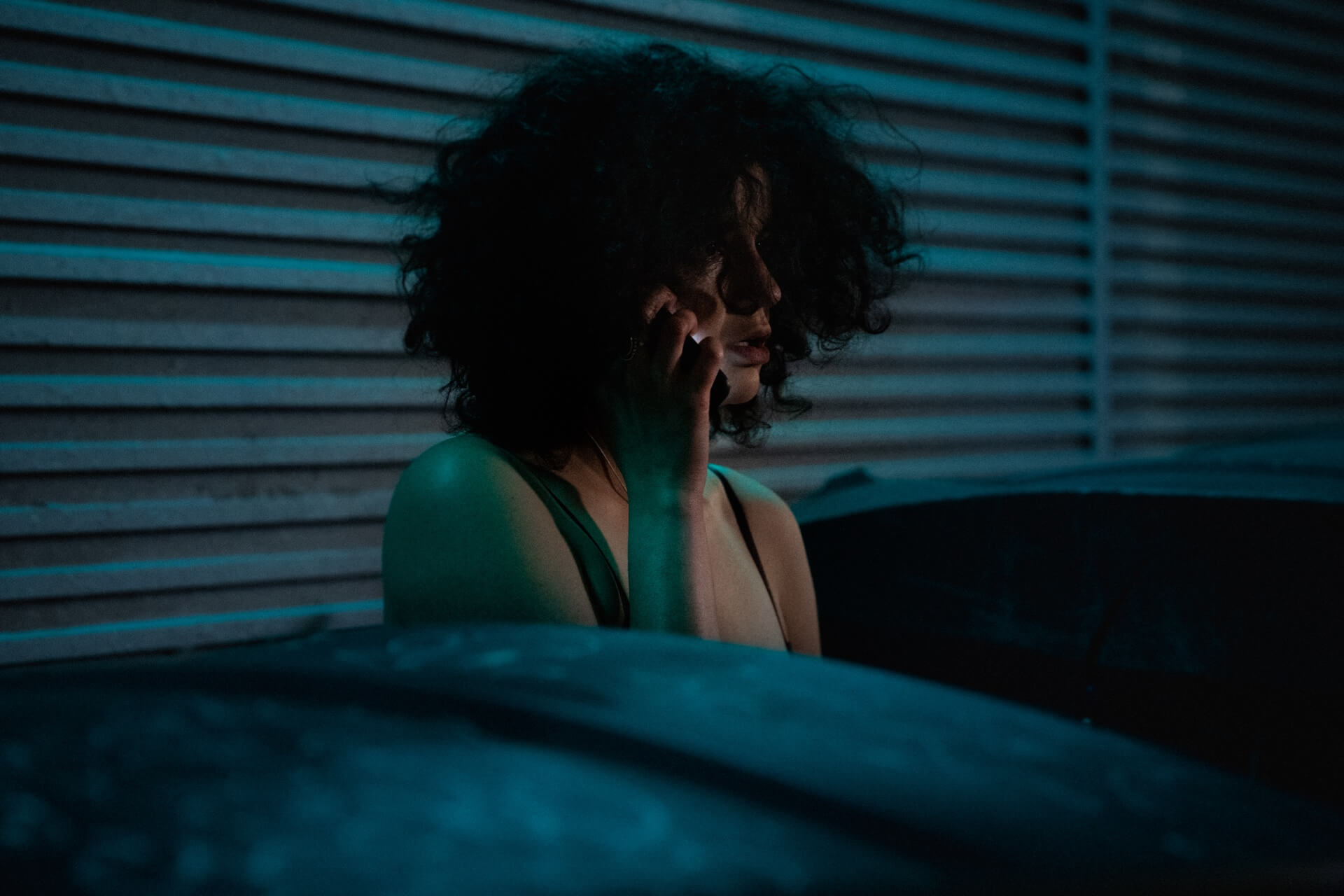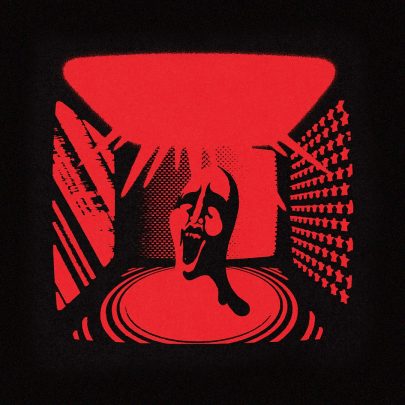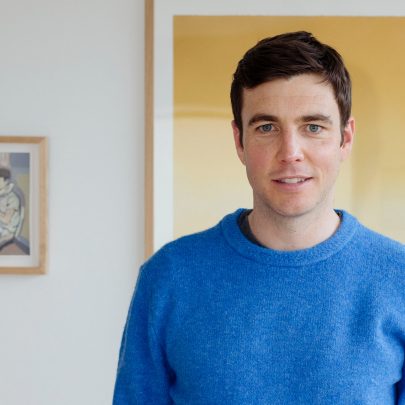Sep 29, 2022 Film & TV
In a landscape often represented as a clean, green paradise, with sweeping drone shots of trees, mountains and lakes; it takes a film like Michelle Savill’s Millie Lies Low to show that sometimes heaven can be just as grey as anywhere. In Millie Lies Low, Savill’s debut feature, we are in Pōneke, but not the “You can’t beat Wellington on a good day” version. No, this is the capital of endless bluster, wet concrete and pallid skies, an urban malaise familiar to ramen-and-coffee-fuelled students and shivering renters in uninsulated, overpriced flats. It’s a refreshing change of scenery, and perfect for a film laced with grim, detached humour about the deeply resonant desperation of pursuing a creative practice in this country.
The titular Millie (Ana Scotney) is a recent grad hanging onto a rapidly unspooling thread, desperately paving over past mistakes even as they threaten to swallow her whole. At the beginning of the film, we hover on a shot of Millie, wide-eyed, in the midst of a panic attack attempting to hop off a taxiing airplane. Millie, we’ll soon discover in a fantastically cringe “Look-How-Great-Our-Graduates-Are!” university ad, is the recipient of a scholarship to study architecture in New York and has royally screwed up by bailing at the last minute in a moment of self-doubt. A poor student who has already cut her Aotearoa-based ties, her budget is too limited to be able to afford another flight to New York. In lieu of admitting that she had a panic attack, the prideful Millie instead elects to create an elaborate fiction, trying to convince friends and family members that she’s living it up in New York as she attempts to patch up her plans, all the while attempting to stay hidden in the village-like city.
Savill’s debut is confident, wry, and tension-fuelled, based on her own experiences of taking an original short film to the SXSW festival and missing the flight, cleverly blown up to feature length, as Millie’s disastrous catalyst quickly balloons into an even more disastrous aftermath. It’s clear from the outset that there is more to Millie’s panic attack than simple nerves, and to her seemingly instinctual need to cover up her faux pas rather than face up to the people she’s left behind. There’s a stinging pathos to Millie, who takes the anxieties of every New Zealand artist wrestling with imposter syndrome and the incessant one-up-manship that dominates our up-and-coming arts scenes, and rolls them into a single person.
The core of the film is Scotney’s fierce performance, the kind one might comfortably call ‘starmaking’, a minutely controlled thing of escalating desperation and vulnerability, manifested as self-sabotaging stubbornness. Clad in hoodie and sunglasses, scampering through carparks or holing up in a freezing tent in the bush, Scotney’s face is alight and expressive, a perfect foil for the exhausting minutiae of maintaining little white lies, at once someone intensely identifiable and understandable and frustrating beyond belief. In one scene, Millie utilises a bag of flour and a flashing neon video on her laptop to try to evoke the snowy streets of New York City. Scotney’s eyes here are fantastic — alive with excitement coupled with a kind of suspended disbelief at the lengths to which she’s found herself going.
There is a touch of American filmmaking duo the Safdie brothers’ work (Uncut Gems, Good Time) in her characterisation and in the implementation of Savill’s direction, with it’s propensity for stressful, armseat-clenching situations. It’s that rapidly escalating humiliation, and the knowledge that it all must come crashing down, that makes Millie a fleet and acidic delight. The screenplay by Eli Kent, who between this and the wildly tonally different Coming Home in the Dark ensures his place as one of our most exciting screenwriters, is filled with acute observations about the way New Zealanders relate to others’ successes, and the ways in which we struggle to meaningfully connect with each other. Savill and Kent do well to hone in on the way the fictional identities we craft on social media bleed into our understandings of one another, and the way it fuels gossip and backstabbing. If there is a villain in Millie Lies Low, it’s that unassuming little Instagram icon on Millie’s phone, a pulsating pressure point reminding Millie of her myriad failures and inadequacies. In its exploration of regrets and the escalating consequences of one out-of-character decision, it put me in the mind of another of Kent’s works, the excellent short film School Night, itself an incisive exploration of a generation underrepresented on our screens.
Andrew Stroud’s economical but evocative cinematography largely stays by Millie’s side, throwing us headlong into her across-town odyssey. This is aided by welcome appearances from an assembly of young actors, notably Jillian Nguyen and Chris Alosio as Millie’s frenemy and ex, respectively — while Rachel House also makes a brief but effective turn as Millie’s mother, and the two performances evoke a lifetime of mother-daughter stresses with fluid ease. There’s a good-humoured nature to many of the performances, a dash of levity that amplifies the stress in a way that’s funny, rather than distracting.
If there’s a downside to Millie Lies Low, it’s that while the narrative eventually reaches a place where it must all totally fall apart, the film seems to slightly pull its punches in the final stretch. For a setup so elaborately and delight- fully messy, the need to wrap everything up neatly feels like a missed opportunity. There are certainly grace-notes here, like a final sequence set in the infamous Mount Victoria ‘tooting’ Tunnel, where a young woman not unlike Millie was once murdered and covered in concrete during construction, a subtle barb of venom coupled with a clever use of camera over-exposure in the final shot. It leaves one wondering what kind of emotions might have been provoked in totally committing to its central character’s downfall, what questions that might provoke in the audience. These are small gripes though, particularly in light of the sensitivity and care that each member of the ensemble brings in facing the cold light of day.
It’s ironic, in the end, that what makes Millie Lies Low special is that it is given the room to just be a film. A well-made one, certainly, but also a confident debut paving the way for an exciting new voice in the landscape of modern New Zealand filmmaking, where funding opportunities are so sparse and so strongly contested, the level of pressure on each project to somehow reach every audience, to be everything to all New Zealanders and beyond, often creates an atmosphere of risk aversion. It’s doubly ironic, then, that a film that bucks this trend is one about artistic pressure — to live up to the image, to appear as inoffensively successful as possible. Here’s a film that isn’t afraid to let its lead be alienating, even unlikeable, to be an evocation of a particular subculture of New Zealand, and to be critical of our country in a way that is sharp and incisive. It bodes well for the next generation of New Zealand filmmakers.






